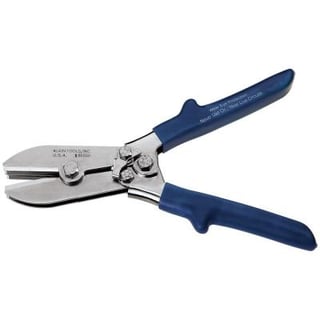I have been doing some basic HVAC duct work as part of a remodeling project and I can never get the pieces to fit together without massive amounts of elbow grease and mangling the ends. Is there some kind of trick that I am missing that makes it easier? I am working with 6 inch, and 7 inch sheet metal duct and vent boots as well as some flex duct.
3 Answers
You need a duct crimper like this to reduce the diameter of the end of one piece of duct:

Run the tool around the end of the duct so that you have multiple parallel crimps. That piece should slide right into the uncrimped piece, giving you a secure connection to tape.
If you don't want to spring for a dedicated tool, I've seen where people use needle-nosed pliers to do the crimping.
-
2The reason this works is that the crimps, by folding part of the tube inward, shrink the effective radius and thus make it possible to slide the crimped end into the uncrimped one. (I've used the needle-nose trick on rain gutters.)– keshlamCommented Jun 8, 2014 at 23:56
If the ends are already crimped from the factory, get your duct pretty close to being in line, in other words one only slightly angled from the other. This will allow one portion of the crimped end to go no more than a 1/4" in until it begins to get difficult. Find a away to keep the duct stable (I usually straddle the duct to hold it steady) while you are trying to get the last edge past the other, it usually takes both hands to do, using your thumbs to push the last part of the crimped end in while you use, if you can picture this, the free fingers to help keep the uncrimped round or at least to keep it from deforming. The reason being where the metal gets caught on the mating piece, when you push down to tuck it in so to speak, the other piece will try to follow it down too. The free fingers will help govern this problem, but the thumbs do most of the pushing in to get the parts to line up. Then again you can you could use a crimper or needle nose pliers in a pinch...
When I get the duct lines from big box they come in sheets that you have to eventually bind into a cylinder. I create my first. Then I only bind the second on the bottom foot or two. Meaning the top is still not shape - so it bows out. This causes the bottom to pinch in slightly. I push it into the first duct, then finish binding it... and so on and so on.
